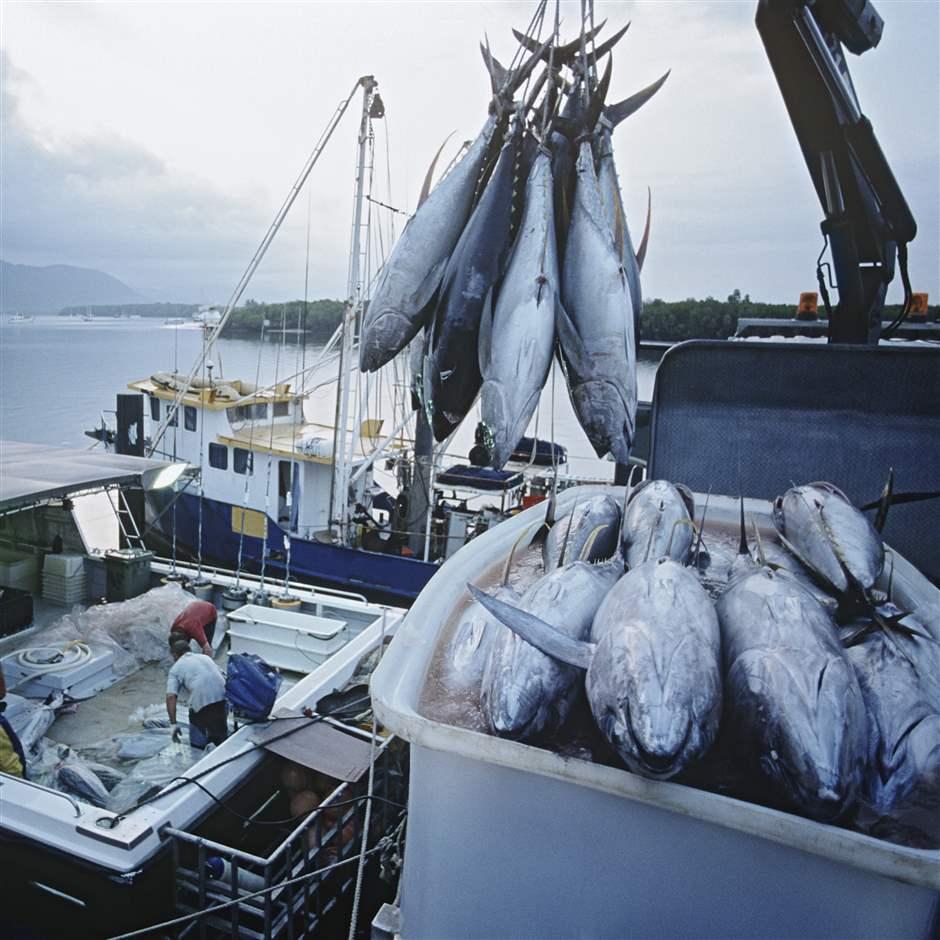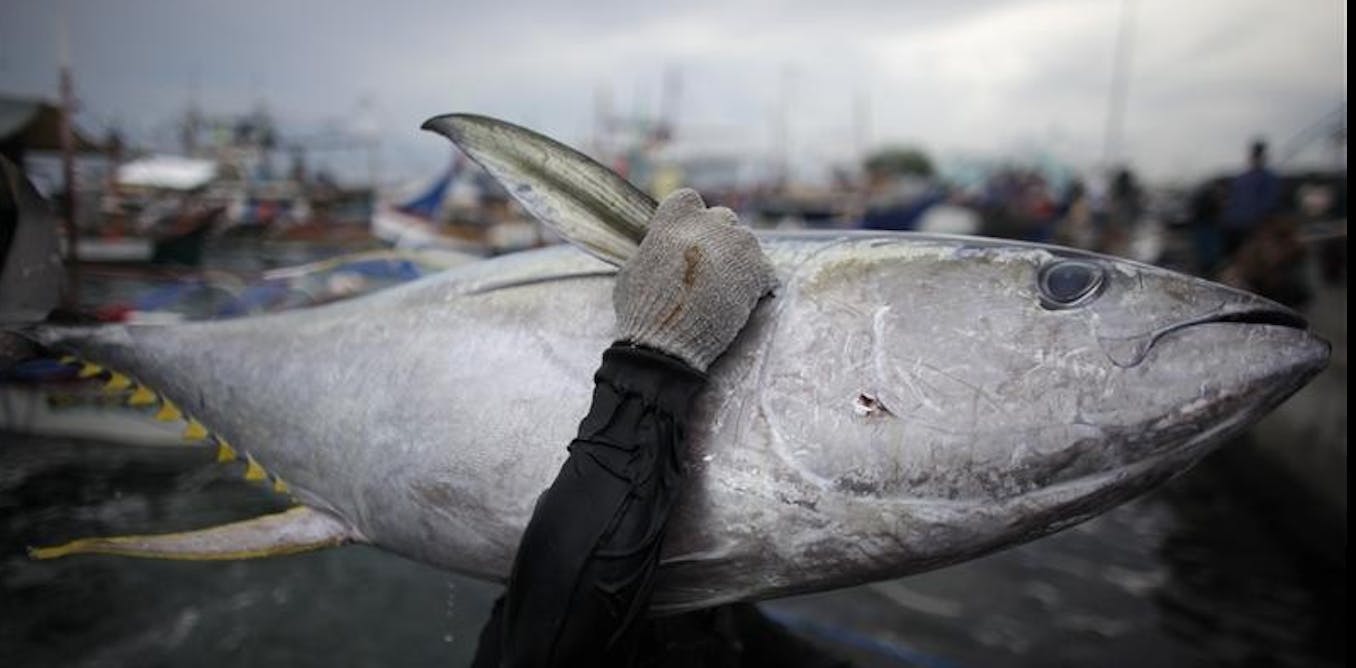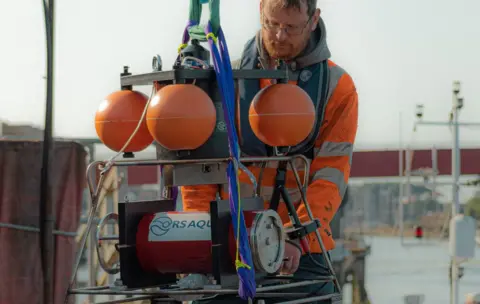How AI is being used to prevent illegal fishing
 In late 2023, the Spanish government levied fines against 25 Spanish-flagged fishing vessels found operating in close proximity to Argentina's territorial waters. The penalties were imposed due to the vessels deliberately deactivating their GPS-based automatic identification systems (AIS), which typically broadcast their locations. Such actions are often indicative of illegal fishing activities.
In late 2023, the Spanish government levied fines against 25 Spanish-flagged fishing vessels found operating in close proximity to Argentina's territorial waters. The penalties were imposed due to the vessels deliberately deactivating their GPS-based automatic identification systems (AIS), which typically broadcast their locations. Such actions are often indicative of illegal fishing activities.
David Kroodsma, who leads the research team at Global Fishing Watch, highlights that illegal, unreported, and unregulated (IUU) fishing accounts for an estimated 20% of global catches. According to the UN Food and Agriculture Organization (FAO), IUU fishing may result in the capture of up to 26 million tonnes of fish annually, representing approximately one-fifth of the total catch. The financial value of this illicit market is estimated to reach up to $23 billion. This rampant IUU fishing significantly contributes to overfishing, with the UN reporting that one-third of global fish stocks are currently being exploited beyond sustainable levels. Notably, the population of species like the bluefin tuna has plummeted to just 2.6% of its historical, unfished abundance, illustrating the dire consequences of unchecked fishing practices on marine ecosystems.
This rampant IUU fishing significantly contributes to overfishing, with the UN reporting that one-third of global fish stocks are currently being exploited beyond sustainable levels. Notably, the population of species like the bluefin tuna has plummeted to just 2.6% of its historical, unfished abundance, illustrating the dire consequences of unchecked fishing practices on marine ecosystems.
Rare Fishes Facing Extinction
 According to Mr. Kroodsma, the precarious state of sharks and rays, coupled with extinction threats to sea birds and turtles due to bycatch, underscores the urgent need for better ocean management. He emphasizes the critical need for proactive measures to mitigate these looming threats.
According to Mr. Kroodsma, the precarious state of sharks and rays, coupled with extinction threats to sea birds and turtles due to bycatch, underscores the urgent need for better ocean management. He emphasizes the critical need for proactive measures to mitigate these looming threats.
Global Fishing Watch, a collaborative initiative between Google, marine conservation organization Oceana, and environmental group SkyTruth, is dedicated to addressing the challenges of overfishing. Leveraging advanced technology and partnerships, the organization is pioneering innovative approaches to monitor and quantify the scale of overfishing worldwide.
Harnessing Advanced Technology
To enhance monitoring capabilities, Global Fishing Watch employs sophisticated AI software and satellite imagery. This technology enables the organization to map the movements of over 65,000 commercial fishing vessels globally, including those without GPS-based automatic identification systems (AIS).
By analyzing vast amounts of satellite data, the AI software identifies vessels and offshore infrastructure, cross-referencing this information with publicly available AIS signals, radar, and optical imagery to detect vessels that fail to transmit their positions. Through these efforts, Global Fishing Watch aims to provide comprehensive insights into fishing activities and facilitate more effective management of marine resources.
AI Targeting "Dark" Vessels in Fishing Detection
Global Fishing Watch is pioneering an innovative approach to identify and monitor vessels not equipped with GPS-based automatic identification systems (AIS), aiming to pinpoint those likely engaged in fishing activities.
According to Fernando Paolo, senior remote sensing machine learning engineer at Global Fishing Watch, the organization's "fishing detection algorithm" utilizes various data points to determine the likelihood of a vessel engaging in fishing. Factors such as vessel length, environmental conditions, location, density of vessel traffic, and oceanic parameters like temperature are analyzed to infer the vessel's activities.
Paolo explains that the model distinguishes between fishing vessels and other types such as passenger ships, oil tankers, and cargo vessels. This sophisticated approach allows Global Fishing Watch to identify potential illegal or unregulated fishing activities.
Research conducted by the organization revealed that approximately three-quarters of the world's industrial fishing fleet operate without public tracking. Particularly concerning hotspots have been identified around Africa and South Asia.
To enhance detection capabilities further, Global Fishing Watch is striving to incorporate higher-resolution satellite imagery. This advancement aims to increase the detection of smaller fishing vessels, thereby improving the organization's ability to monitor and combat illegal fishing practices on a global scale.
Stamping out illegal fishing
Stamping out illegal fishing requires rapid data acquisition, and a collaborative effort between the University of Southampton and local company RS Aqua aims to achieve just that. They're developing a submarine robot equipped with underwater sensors and AI technology to detect fishing activity in real-time. The AI system can distinguish between natural ocean sounds and those generated by fishing vessels, with a focus on identifying trawlers operating in protected waters. According to Paul White, a professor at the University of Southampton specializing in statistical signal processing, the project's goal is to enhance monitoring of fishing activity within marine protected areas (MPAs). These areas, covering 8% of the world's oceans, often attract fishermen due to their rich ecosystems. However, less than half of MPAs are effectively safeguarded from fishing, highlighting the urgency of the project.
According to Paul White, a professor at the University of Southampton specializing in statistical signal processing, the project's goal is to enhance monitoring of fishing activity within marine protected areas (MPAs). These areas, covering 8% of the world's oceans, often attract fishermen due to their rich ecosystems. However, less than half of MPAs are effectively safeguarded from fishing, highlighting the urgency of the project.
The submarine robot, once detecting fishing activity, will automatically alert authorities for swift intervention. White acknowledges the challenge of designing AI algorithms that are both power-efficient for long-term deployment and capable of accurately distinguishing trawler noise from other oceanic sounds.
Paul Lansbergen, chair of the International Coalition of Fisheries, emphasizes the severity of illegal, unreported, and unregulated fishing (IUU), noting its detrimental impacts on sustainability and the economy. However, he underscores the increasing attention and concerted efforts from industry leaders, policymakers, and stakeholders to combat this issue.
Conclusion
Paul Lansbergen, the head of the International Coalition of Fisheries, highlights illegal, unreported, and unregulated fishing (IUU) as a significant problem within the industry. He stresses that IUU fishing has tangible effects on both sustainability and the economy. However, Lansbergen notes that the issue is no longer hidden and is receiving increased attention from industry leaders, policymakers, and other stakeholders who are actively addressing the challenge.










































































